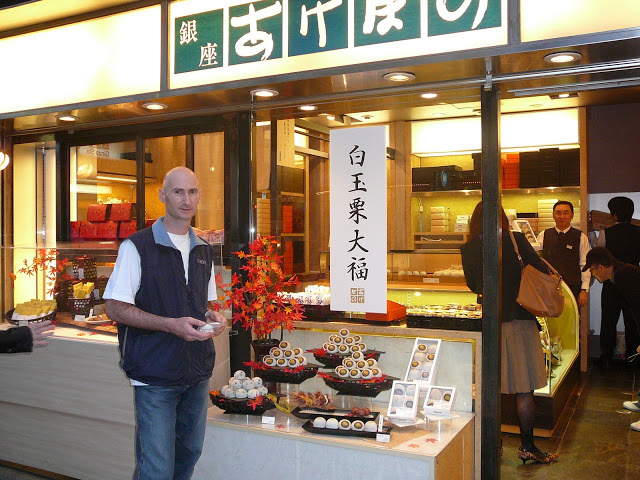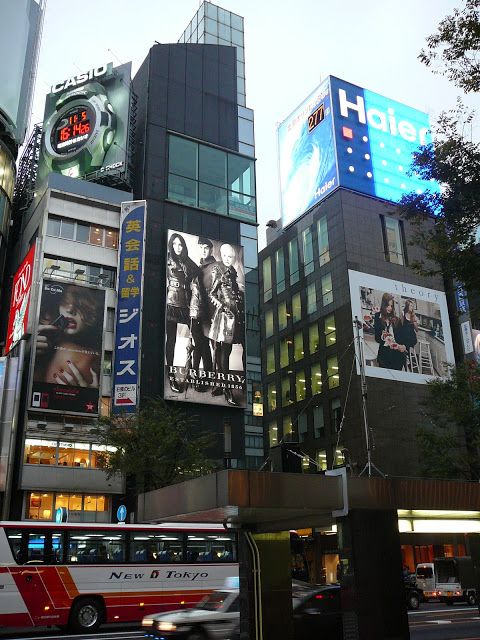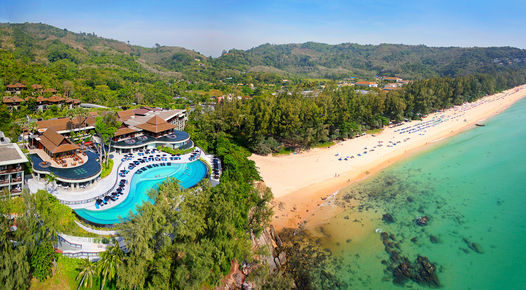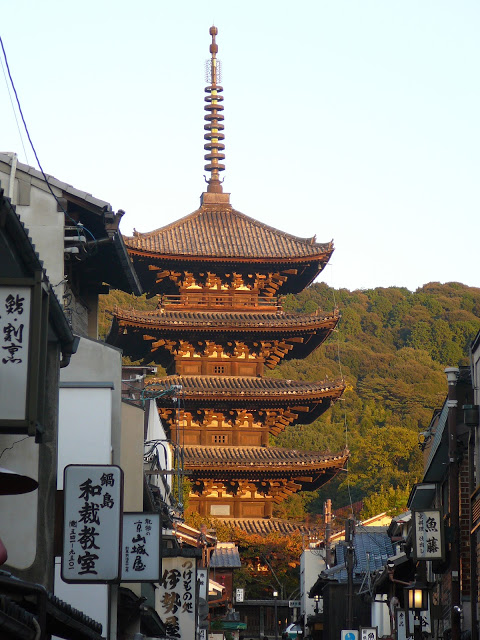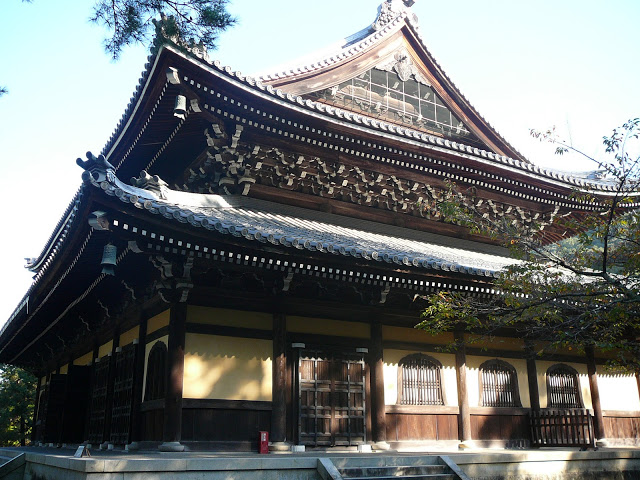
From the end of the Nara Period (794), Kyoto has functioned as the crossroads of Japanese history. From its beginnings as the Kunikyo and Nagaokakyo settlements until the Emperor moved to Tokyo in 1868, it was the capital of Japan for over 1000 years. Even today, Kyoto is the cultural center of Japan, and continues to be loved by Japanese and people of the world alike.
The ancient capital of Kyoto, whose traditions have been matured through the ages, is now making startling advancements.
Its rich culture and experience are being utilized in modern technological industries. For example, semiconductor and liquid crystal displays have been made based on the techniques of Kiyomizu Pottery. Traditional skills developed more than 1000 years in this ancient capital are now being utilized in cutting-edge technologies.
Furthermore, the people of Kyoto have produced many religious arts and forms of entertainment. Countless religious Shinto rituals and festivals have captured the imagination of people the world over. Among these, festivals such as Gion Matsuri that were lost in the turmoil of war have been restored, and continue to be carefully maintained traditions.
The people of Kyoto as a matter of course open their cultural treasures the world. We hoped to enjoy the inexhaustible charm of Kyoto – its rich natural beauty, culinary culture and arts. Almost alone among Japanese cities, Kyoto escaped the Allied bombings of World War II, although it could be argued that the concrete redevelopment that turned city centre of Kyoto into an ordinary metropolis did just as thorough a job.
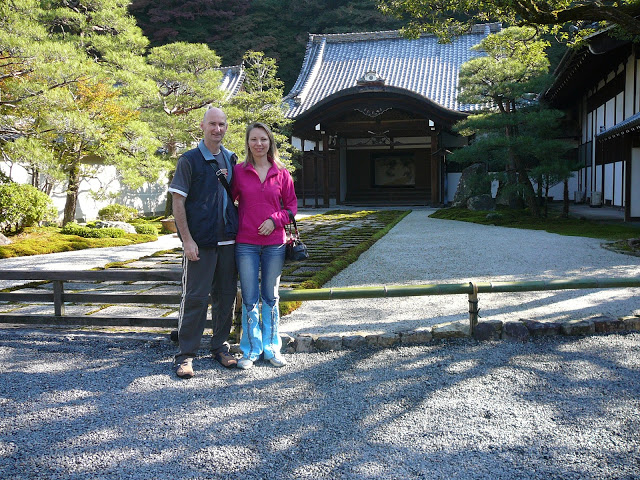
The air was clean here in the Kyoto morning. We rose at 7.30 and devoured the croissants and pastries that we had purchased from Lawson (seven eleven store). There was a temple in the hills within walking distance from the hotel, so as the mist rose from the buildings so did we, into the pure and serene tranquility that only comes from that moment when dawn has broken but man has not yet started is motorcar and choked the air with noise and pollution. All was quiet. We noticed a gentleman taking photos of an old abandoned railway line; we thought this must have some significance to the local community so as a true tourist I just had to take a peek. The sheer distance between the rails we enormous. Elena lay between the tracks with arms outreached and still could not touch the rails. What was this line used for? It seemed to go on a steep incline toward the hills and at the bottom of the hill there was a man made lake and fountain. I can only assume that the railway was used for horse drawn carriages, maybe for royalty who know but it was interesting to see.
Advancing through the gate we entered the temple gardens. There were very few people up at this hour; I mean it was 8.30am. The moss on the rock gardens took on the look of painted grass, oh how I miss New Zealand and its lush green pastures. People moved in quiet unison contemplating their lives and escaping the shackles of their worldly woes admiring the architecture of their ancestors.
Nanzen-ji (Southern Mountain Temple) is considered the most famous and important Zen temple in the world. Home of the Rinzai sect of Zen Buddhism the temple consists of 12 sub-temples, which only a few are open to the public. Also within the temple grounds are several gardens, of which only three are available to be viewed. Two of the sub-temples also serve vegetarian lunches.
We left the temple via a back road that lead to the man made lake and fountain passing a fence made of fake bamboo and tied with black ribbons.
Following the canal passed the Kyoto Zoological Park we made our way to the river that dissects the centre of the central business district and through the streets of ancient Geon the Geisha capital of Japan.
Wandering the streets of Kyoto for the day opened the opportunity to experience some of the local food and shopping. From the large department malls and their overpriced branded products to the smaller and out of the way trinket shops Kyoto has a lot going for it. At night there are many night clubs, but with our limited Japanese we decided not to visit.
As the afternoon sun dipped across the sky we embarked on a track through some of the older streets and into the hillside to another famous temple. Built high over the city this was the perfect vantage point to get great photos and see more traditional Japan. Kiyomizudera is one of the most well known temples in Japan. It was founded in 788, and was registered as a UNESCO’s world heritage in 1994. The most attractive feature of this temple is the view from the terrace of the main hall. The terrace is known as “kiyomizu no butai”.
Fall foliages and cherry blossoms are so beautiful here and attract many visitors. The temple is open at night during the seasons.
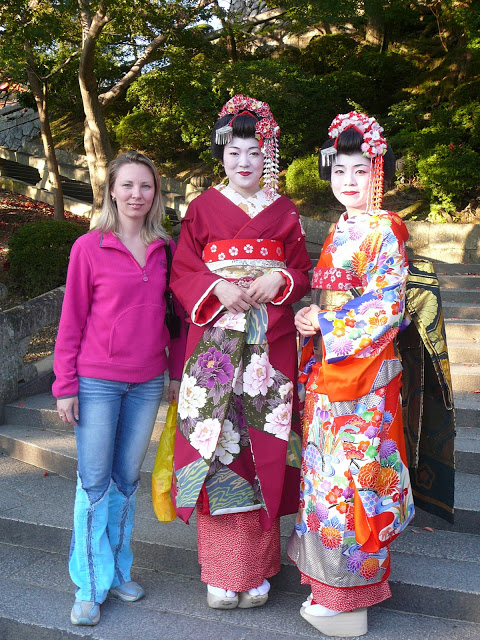
Rounding the path we finally saw what we had been searching for in Gion, a true real life Geisha. There were two of them walking on high wooden platform shoes. We just had to get a photo. Like painted dolls and with such perfect poise and posture. We in the west have no real idea of what it means to get “dressed up”. Imagine the time it takes these poor girls to dress in the morning.
Descending from the heights of the Kiyomizudera temple complex to the sound of a thousand school children on excursion at the entrance we headed for the hilltop souvenir shops and a little taste of something authentic.
Passing by crowds and the odd western tourist still climbing the road to Kiyomizudera I spied a shop selling what looked like small round sweet bread rolls. Upon closer investigation I discovered that these “bread rolls” contained meat and some sort of vegetable and in my usual “I gotta try this” fashion I bought two, one for me and one for Elena to give me if she didn’t like it – I know her so well. Needless to say I enjoyed the aroma and while the vegetables were scalding my tongue I detected the taste of black bean sauce and for a brief moment knew that I was eating beef mince before the searing heat took over one of my five senses.
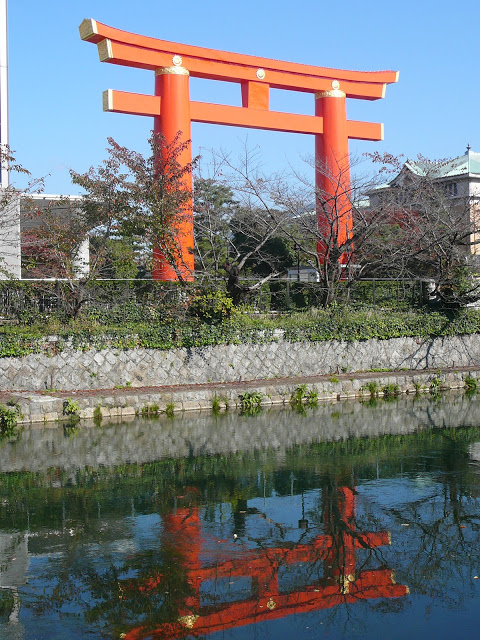
It was a long walk back to our hotel as the sun dropped over the mountains and after a full day out exploring we were glad to get back for a quick rest before embarking on our next quest – dinner. Walking back down the road toward the city we spied a little corner restaurant only 100 meters from our eating place from the night before. This place was a little different and there were a couple of tourists, although there was only enough room for about 25 people. We sat at the counter and watched our food being prepared right in front of us on a huge hot metal plate. The food was delicious and after washing it down with yet another fine Japanese Beer it was time to stagger up the road via Lawson for our morning fix of pastries and back for a good night’s sleep.



